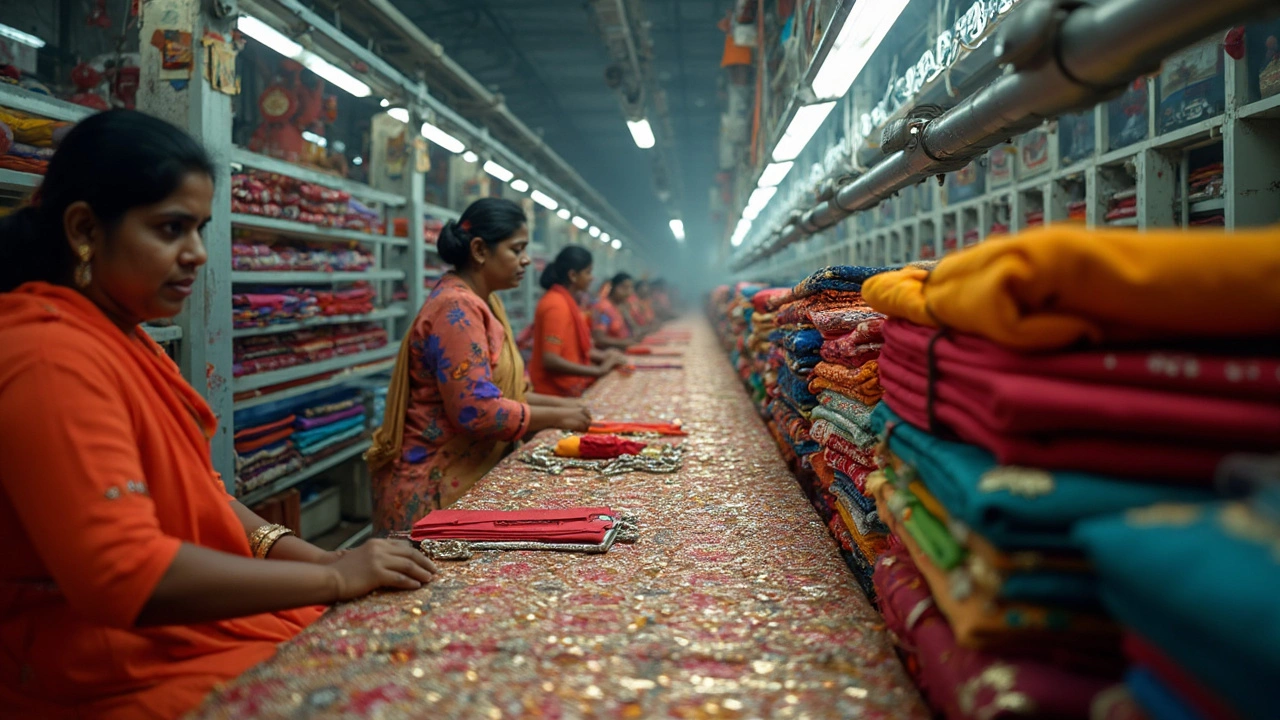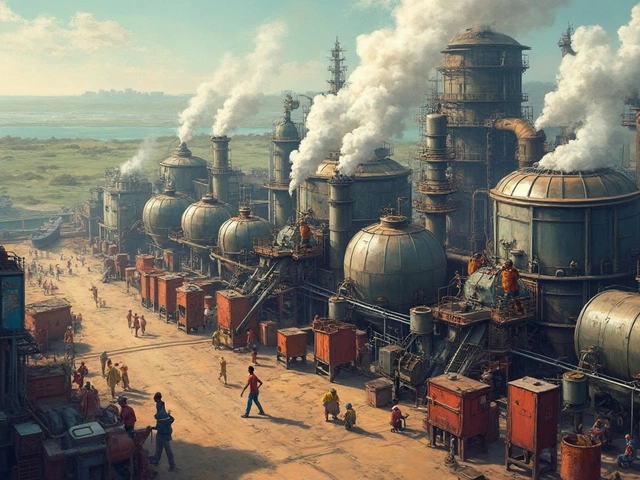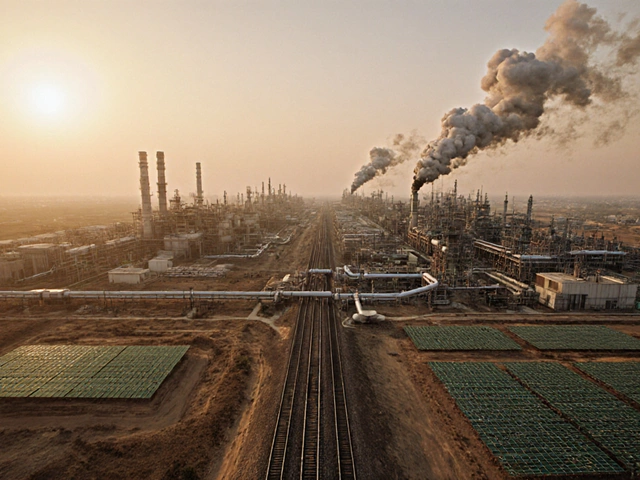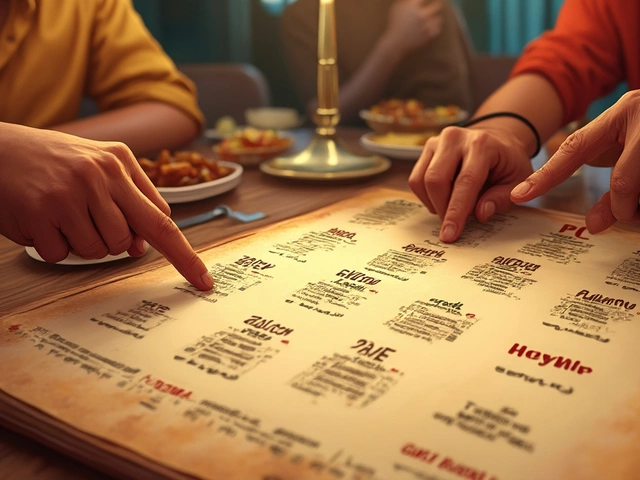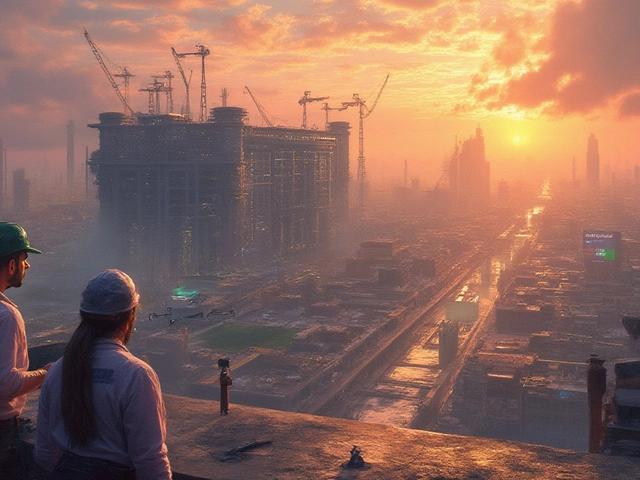You’ve probably seen bright sarees or comfy bedsheets with a made-in-India tag, but ever wondered where they’re spun into reality? That’s usually Surat—a city in Gujarat that pretty much runs the show as India’s textile capital. This isn’t just a nickname; Surat churns out around 40% of the nation's total man-made fabric. That’s like millions of meters of material rolling out every single day.
What’s wild is how Surat’s textile scene isn’t just for massive manufacturers. Even small family businesses and start-ups manage to make a splash. They’ve blended old-school weaving with new tech, bringing everything from silky crepe to sturdy denim into shops around the world. If you’re curious about tracing the source of that soft scarf or planning a textile-related venture, understanding how Surat works will save you time and money.
- Surat: The Hub of Indian Textiles
- What Makes Surat So Special?
- Facts About Surat’s Textile Industry
- How Surat Impacts India’s Economy
- Helpful Tips for Navigating Surat’s Textile Markets
Surat: The Hub of Indian Textiles
If you ask anyone in the fabric business where most of India's textiles come from, Surat is the answer nearly every time. The city made its name by pumping out huge volumes of polyester, viscose, and synthetic fabrics—over 30 million meters a day, to be exact. That figure alone explains how Surat earned its title as the textile city of India.
What sets Surat apart isn’t just its size; it’s the sheer scope of the industry. There are around 700,000 power looms scattered across the city. Each one hums away, making everything from dress materials to sarees. If you walk through neighborhoods like Pandesara or Katargam, you’ll hear the machines before you even see them. It's a non-stop operation, with work happening around the clock.
The city is also packed with dyeing mills and processing houses. This lets Surat control every step of fabric production—right from weaving the yarn to finishing the final product. It’s why big buyers from Mumbai, Delhi, and even overseas show up here looking for fresh stock and the latest patterns.
Surat didn’t always hold this crown, though. It took off in the 1990s, when local leaders pushed for better infrastructure and electricity, making it easier for anyone with a loom and drive to start up. Today, even the smallest manufacturers find ways to connect with big fashion brands and exporters.
The best part? The city’s textile markets, like Ring Road and Salabatpura, aren’t just for wholesalers. Retailers, fashion designers, and even bargain hunters show up for deals on bulk fabrics and finished goods. So, no matter your budget or business type, Surat’s got a piece of the textile action for you.
What Makes Surat So Special?
Surat isn’t just called the textile city for bragging rights—it’s earned that title by building an entire ecosystem around fabric. The first thing you notice is how everything in Surat connects to textiles. From giant weaving mills to tiny shops that sell raw yarn, this city lives and breathes fabric.
One key reason Surat stands out is its insane scale. The city alone houses about 700,000 power looms. These machines work around the clock and turn out fabrics like georgette, chiffon, and synthetic sarees faster than most places can dream of. And they’re not limited to just one material—Surat is famous for its man-made fibers, especially polyester. Nearly 90% of the country’s total polyester comes from here.
Have a look at why Surat is a big deal:
- It’s the go-to place for synthetic and blended fabrics in India.
- Surat’s dyeing and printing facilities can handle bulk orders in all colors and patterns.
- There’s a wild mix of traditional and modern techniques—laser cutting one day, hand embroidery the next.
- Fabrics from Surat end up in showrooms from Delhi to Dubai.
Transport matters, too. The city sits on rail, air, and road networks, which means goods can move out fast. Textile traders can order hundreds of rolls and have them on the way by evening.
Here’s a table that puts some numbers to it:
| Stat | Value |
|---|---|
| Power Looms in Surat | ~700,000 |
| Jobs Provided | Approx. 1.5 million |
| Share of India’s Man-made Fabric Output | ~40% |
| Annual Fabric Production | Over 30 billion meters |
| Main Product | Synthetic & Blended Fabrics |
Surat’s got the right location, the machinery, and a work-crazy crowd that knows fabrics inside out. This is what really puts Surat on the global textile map.
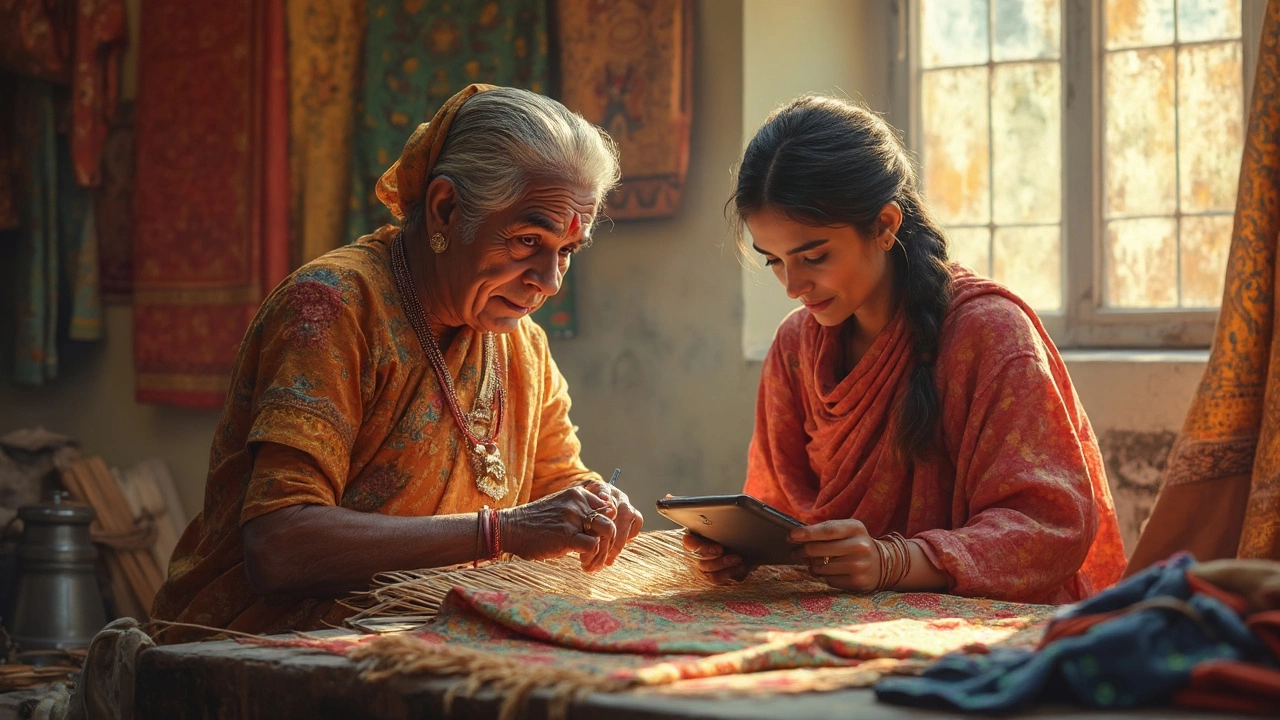
Facts About Surat’s Textile Industry
Surat isn’t called the textile city for nothing. This one city handles over 80% of India’s synthetic fabric production, which includes everything from polyester to rayon. If that sounds massive, it is—think about almost every third piece of synthetic fabric sold in India coming from Surat’s factories. That covers clothes, sarees, dress materials, home furnishings, and way more.
The city is pumped with around 400,000 power looms. Those looms run day and night, helping Surat churn out about 30 million meters of raw fabric daily. Yep, every single day. It’s not just about numbers, either. Surat’s textile cluster employs over 1.5 million people, making it one of the largest sources of jobs in western India. It’s not just factory work—there’s weaving, dyeing, printing, embroidery, and finishing, so plenty of options for different skills.
Surat isn’t stuck in the past, either. Because of its textile clout, it leads in adopting modern machinery, digital printing, and speedy production lines. Dyeing houses use up-to-date, eco-friendlier processes, and a lot of the workforce is tech-savvy. The city’s famous for revolutionary techniques like digital textile printing, which helps push out complex designs at lightning speed.
If you peek at export numbers, you’ll find Surat doesn’t just feed Indian markets—its stuff ships to countries like the US, Saudi Arabia, and the UK. The local textile trade makes up a huge chunk of Gujarat’s GDP. And if you hear “Surat saree,” just know it’s a popular pick nationwide, especially for weddings and festivals. For anyone planning to step into the textile business, keeping an eye on Surat’s trends and fairs (like the Surat International Textile Expo) is a smart move.
- Produces 40% of India’s man-made fiber and fabric
- Home to 400,000+ power looms and hundreds of dyeing and printing units
- Major exporter to over 60 countries
- Hosts India’s largest textile fairs
- Constant adoption of the latest textile technologies
How Surat Impacts India’s Economy
No city churns out fabric like Surat. It’s not just busy; it’s the engine of India’s textile industry. The city powers nearly 40% of the country’s man-made fabric production. That’s a massive chunk when you consider how much fabric India exports around the world.
Surat isn’t only stacking up cloth—it's helping millions make a living. Around 1.5 million people in Surat depend directly on textile work. From loom operators to designers and exporters, there’s a real chain of jobs across the board. Plus, small workshops and big factories feed into national supply and keep exports flowing.
Money talks, and Surat’s textile market definitely has a say. Every year, textiles from Surat bring in billions for India. The city reportedly pulls in over ₹50,000 crore from textile-related activities annually, with a solid portion going into international trade. For business folks, Surat’s textile reach means more chances for partnerships, easy sourcing, and connections to global buyers.
| Key Fact | Figures |
|---|---|
| Share of India's man-made fiber output | ~40% |
| Direct jobs created | 1.5 million |
| Annual textile industry turnover | ₹50,000 crore+ |
| Daily fabric processed | ~30 million meters |
What sets Surat apart is how fast it grows and adapts. The city bounced back even after floods or economic slowdowns, constantly upgrading its machines and training. The embrace of digital payments and online orders during COVID-19 actually opened up new sales channels. If you’re thinking of starting something in the fabric world, Surat’s network is massive and quick to help you scale.
- Exports from Surat reach over 100 countries, especially in Asia, Europe, and Africa.
- You’ll find every type of fabric here — from budget synthetics to premium lace and silk blends.
- The city’s textile associations also run skill training centers. These help newbies and veterans alike stay up-to-date.
If you’re looking for a one-stop shop in Indian textiles, Surat is where you want to be. The connections, volume, and know-how in this city shape how India sells to the world.
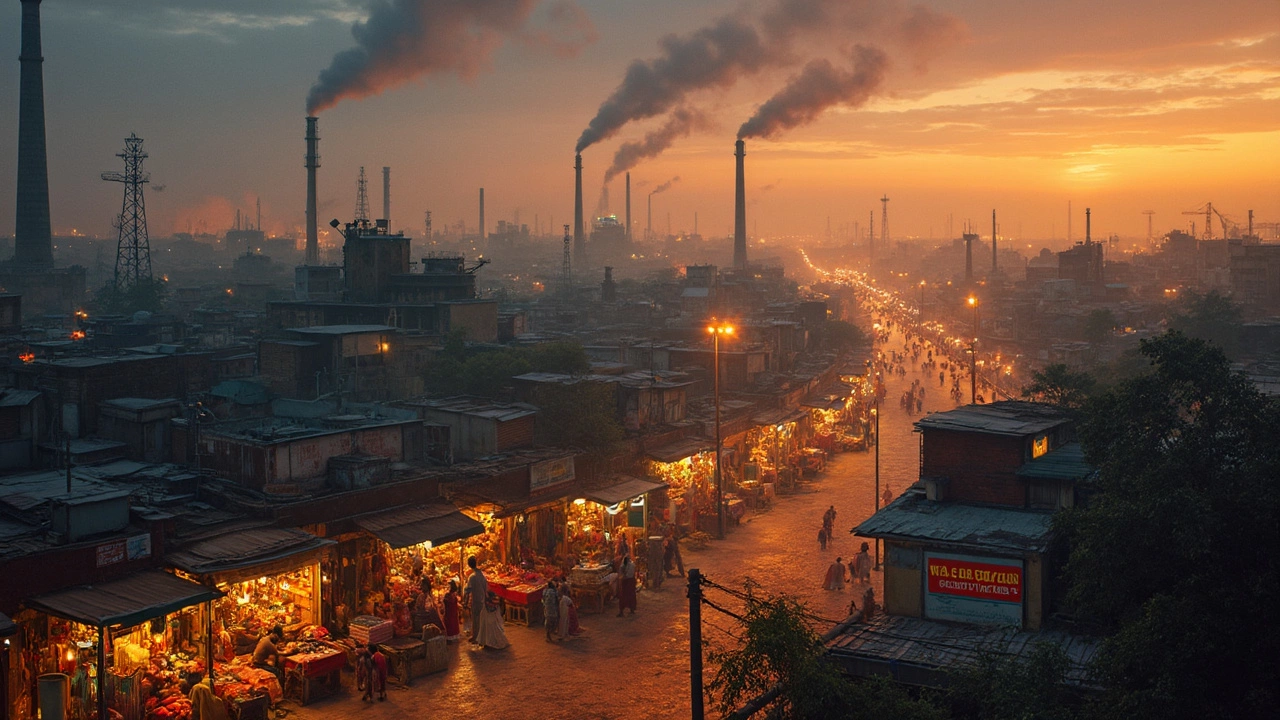
Helpful Tips for Navigating Surat’s Textile Markets
If you want to score the real deals in Surat’s massive textile bazaar, you’ve got to know your way around. These markets are a maze, and it’s easy to get overwhelmed by the sheer size and variety. Here’s what people usually skip mentioning: Surat isn’t just one big market. There are famous areas like Sahara Darwaja for budget finds and Ring Road for everything under one roof, from polyester prints to fancy silk blends.
- Most shops open by 10 a.m. and wrap up by 8 p.m., but the real buzz hits from noon onwards. Early mornings are quieter—good for hassle-free shopping if crowds aren’t your thing.
- Carry cash and use digital payment apps. Some wholesalers still prefer cash, especially for bulk buys.
- Don’t hesitate to haggle. Vendors expect it and you’ll often land a better price if you’re polite but firm.
- Check fabric quality right there. Don’t just go by what it looks like—stretch it, feel the weight, see how the color holds under sunlight (yep, step outside the shop if you need to).
- If you’re planning to buy in bulk or start a long-term partnership, request a fabric sample before committing. Many seasoned buyers do this to avoid surprises.
Here's how the main textile market areas in Surat stack up based on foot traffic, average price per meter, and range of products:
| Market Area | Peak Hours | Avg. Price/ Meter (INR) | Main Products |
|---|---|---|---|
| Sahara Darwaja | 12pm – 5pm | 45 – 150 | Polyester, Print Sarees |
| Ring Road | 11am – 7pm | 70 – 500 | Everything (Silk, Crepe, Laces) |
| Begampura | 1pm – 6pm | 60 – 250 | Dress Materials, Blouses |
| Millenium Market | 2pm – 8pm | 100 – 600 | Luxe Fabrics, Branded Stuff |
Need a translator? Many bigger shops have someone who speaks English, but basic Hindi gets you further. Some shopkeepers are open to video calls if you want to see larger selections before arriving in person. That’s a handy trick to save time, especially if you’re on the clock.
If you’re in for serious sourcing or starting out with a new line, consider visiting during the annual Surat International Textile Expo. It's where you’ll see new tech, best sellers, and connect straight with top textile manufacturers.
